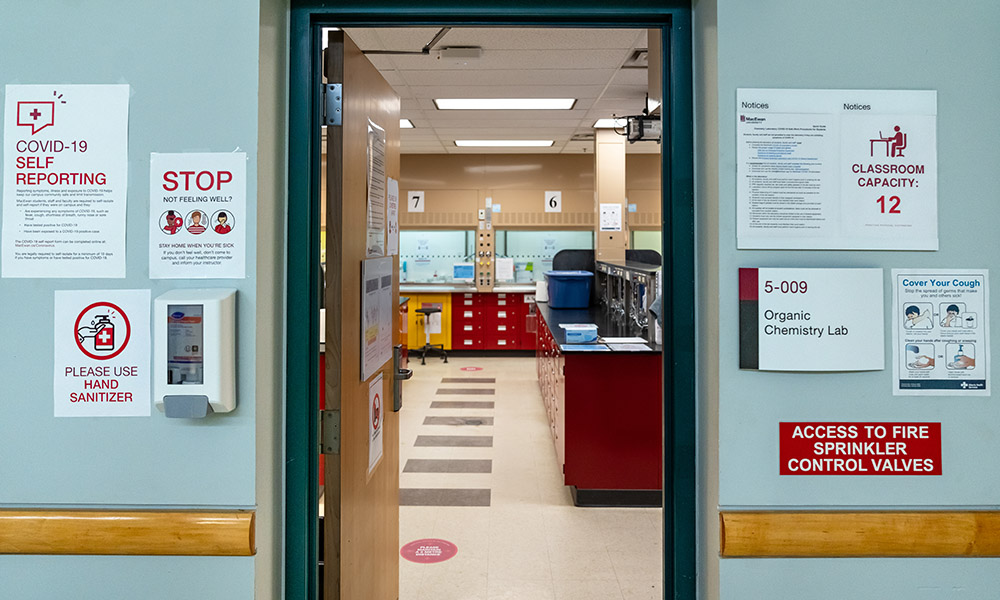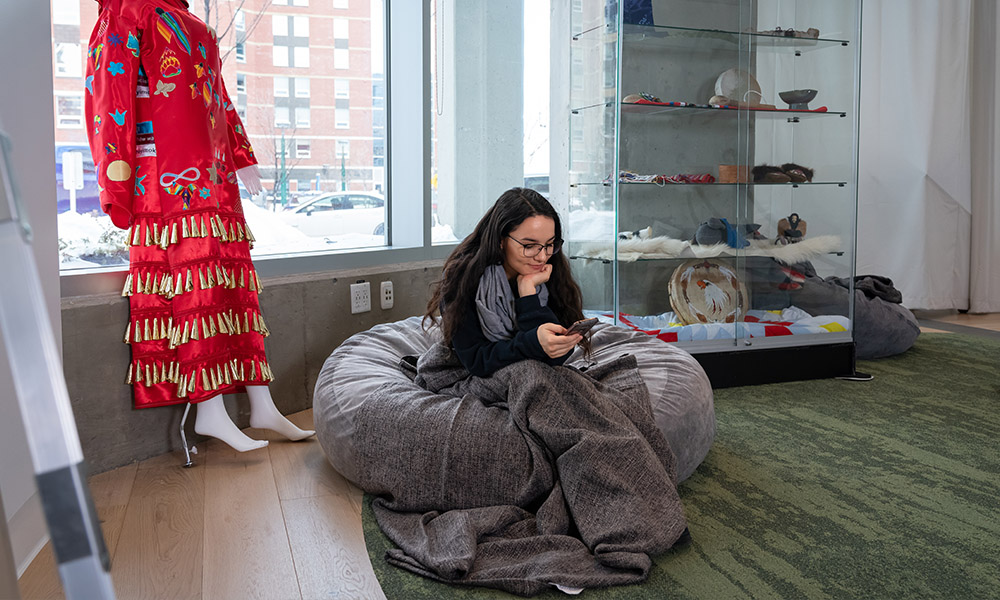The buzz that accompanies a walk across campus today makes the empty – almost eerie – hallways from a year ago seem like a distant memory. But that campus that felt a bit like a shadow of itself is the perfect way to illustrate the difference between a space and a place, says Dr. Jennifer Long.
“A space is a bit like a container,” explains the cultural anthropology professor who teaches ANTH 370, The Anthropology of Space and Place. “It’s how people interact with each other that creates meaning and turns a space into a place.”
Dr. Jeffrey Stepnisky, a sociologist who studies spaces, agrees. “A really important component of self and identity are the spaces in which we live.” That also applies to spaces outside our homes, adds the associate professor and Kule Chair. “We create community not just through shared ideas and values, but also through spaces themselves.”
It’s interesting to think about, given that the idea of place plays heavily in the university’s vision for the future. Of course, Teaching Greatness includes a focus on learning spaces, but dig deeper into the document’s key directions and markers of success, and you’ll see that the idea of place extends beyond that to look at how MacEwan supports students outside the classroom and honours the space its holds in the heart of the city, within the ward of O-day’min.
“When we think about space at MacEwan, we need to think beyond our buildings,” says Dr. Annette Trimbee, MacEwan’s president and vice-chancellor. “I think about conversations I’ve had recently about land acknowledgments – the importance of recognizing the land we are on, our connectivity to the geography and biology of this place, the energy that has drawn people to the ground beneath our feet for centuries, and how we are in relationship with both the land and one another.”
Those connections, adds Dr. Trimbee, present great possibilities.

COVID-19 safety notices posted outside a lab in January 2022 as students, faculty and staff began to return to campus.
But back in the Winter 2022 term, when people were just beginning to come together again, the atmosphere – that feeling of place that Dr. Trimbee so values, Dr. Stepnisky studies, and Dr. Long was looking forward to – hadn’t entirely made a comeback. The prof had a huge project planned for students in her fourth-year applied anthropology course and a community partner on side. But when she introduced the idea to the class, the reaction wasn’t quite what she expected.
“Their energy tanks were empty,” says Long.
So she decided to address the social problem sitting right in front of her. After almost two years apart, how could MacEwan become a space for community again?
In partnership with the City of Edmonton’s RECOVER Urban Wellbeing, she asked her class to take a walk through and explore campus phenomenologically – What did it feel like? What happened when they engaged all of their senses? Her students also audited the types of spaces on campus and held a design sprint (a creative and hands-on workshop filled with visual activities that seek to find solutions to problems) with fellow students. Throughout the process, students kept returning to needing a space to create that sense of community, says Dr. Long.
“They noticed that there is a lot of space on campus dedicated to studying but not as much room set aside for students to just be together. One of their ideas was to look at creating a ‘living room’ on campus,” she explains. But what might that look like? Shag carpeting? Gentle lighting? A cozy environment characterized by Danish Hygge (pronounced hoo-ga)?
Ultimately, says Dr. Long, it comes down to looking for opportunities to create an atmosphere where people want to hang around and create shared memories.
That concept of shared memories – collective memory – and how it can shape a community’s identity has long fascinated Dr. Stepnisky. “When we see the memories and history of a place, it makes our world more interesting and richer – one that we don’t just pass through, but that vibrates with multiple layers of meaning.”
Over the past several years, a number of spaces on campus that are ripe for collective memory to grow have emerged. In 2018, Roundhouse and the Social Innovation Institute opened in Allard Hall as a space to bring together changemakers. A year later, the kihêw waciston Indigenous Centre moved to the Robbins Health Learning Centre to facilitate Indigenous teachings, reflect Indigenous perspectives on wellness and foster a sense of community. Most recently, the Centre for Sexual and Gender Diversity (CSGD) opened in October 2022, increasing knowledge about and bringing visibility to the 2SLGBTQ+ community on and off campus.

A student relaxing in kihêw waciston.
What makes these spaces different than the many other pockets of seating on campus?
They centre on building relationships, spending time together and exchanging ideas about the public good – all hallmarks of what sociologist Ray Oldenburg called “third places” (first places being where we live, and second places being where we work).
“Third places are more than just places to relax away from home and work,” says Dr. Stepnisky. “They are places where people meet to organically talk about social and political issues – to discuss who and what we are as people.”
Are there more opportunities for MacEwan to grow into that kind of space?
“That opportunity is what I’ve always liked about MacEwan,” says Dr. Stepnisky. “As a place of learning and knowledge and scholarship, we have this starting point where we can act as a collective – to come together to better understand the world we live in.”
Another part of successfully doing that, adds Dr. Long, involves engaging with and inviting in community partners – something MacEwan has a long history with.
“The obvious reason we build partnerships with organizations like RECOVER Urban Wellbeing, the Edmonton Elks, Edmonton International Airport and so many others is to create opportunities for our students,” says Dr. Trimbee. “But there is more to it. As a university, we want to contribute to our community and provide solutions.”
Doing that, says Dr. Trimbee, means truly understanding the issues.
“Good partnerships built on reciprocity and respect bring with them a diversity – of both experience and thinking – and that keeps us from falling into the stereotype of universities being ivory towers detached from communities.”
Shaping spaces that don’t feel like “ivory towers” and creating an atmosphere where places, in their best form, can emerge – like the living room idea Dr. Long’s students suggested – is important to Dr. Trimbee too.
“I think there is room for us to challenge ourselves and to really listen to the people who use our spaces. We have serious work to do here, of course, but is there a way to balance our beautiful, extremely well-cared-for campus with something a bit more comfortable? To create shared spaces where people can be themselves, that welcome people from outside MacEwan, that are homey and maybe even a little bit messy? Those are the types of spaces, I think, that encourage people to spend time on campus, to hang around and to connect in meaningful ways. To build community.”
